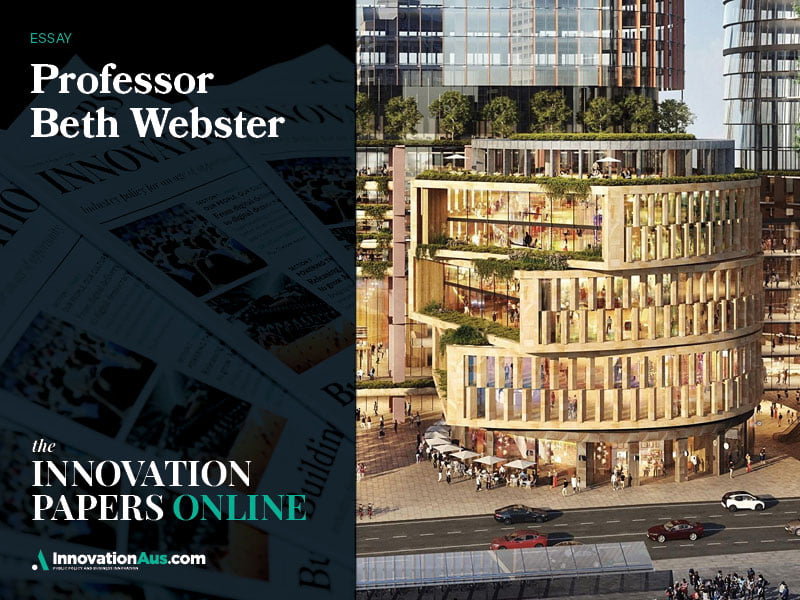It is a longstanding observation that complex businesses that are located close to their competitors are more productive than their more sparsely located counterparts. This theory was shaped by 19th Century British economic historian, Alfred Marshall, and even noted by some of his predecessors.
Early descriptive studies, however, were not sure whether clusters arose because:
- firms in the cluster become stronger and bigger;
- firms relocated from elsewhere to join the cluster; and
- related start-ups were more likely to arise within the cluster
The weight of empirical evidence now supports the last view that highly-productive clusters form because of high startup rates.
According to Klepper (2002), successful clusters generate many new firms when employees leave their employers to start their own businesses, near home, where they have connections and local knowledge.1 As observed by Shane (2000), entrepreneurs discover opportunities related to the information that they already possess.

Australian data (using all 700,000 established and new businesses) also finds that new firms are more likely to start in local areas near similar businesses. However, a recent Australian study by this writer and co-authors (Kollmann, Palangkaraya and Kim) has extended these findings and found that over and above locating near related businesses, new firms are more likely to appear in more competitive local areas.
This suggests that it is the calibre of the local business milieu that matters not just the number of similar businesses. Far from deterring startups, it appears that more intense competition is a spur to recognise and develop new business opportunities.
Our data cannot show why competition attracts, not repels. However, we suspect that the superior information found in competitive technological clusters gives founders and their financial backers the confidence to invest in new high-risk ventures.
Entrepreneurs garner multiple independent bits of information about market trends, competitors’ intentions and technological developments, among other things. It’s the buzz, gossip and general gestalt.

Firms triangulate this information to confirm what is most likely to happen. This assurance enables them to convince investors to commit funds to a new venture.
There are also economies of scale for those businesses that service or complement the congregated industry. Thus, tool makers that service say the leather workers of Italy or the pharmaceutical industry of Switzerland will prosper helping startups and established firms alike.
We also found that new businesses are more likely to be created in local government areas which contain a university campus, potentially by chasing technological advantage.
So, what can be done to improve the success of clusters? Policy here lies squarely with industry.
Over the last few years, a myriad of state and Commonwealth government programs have emerged to encourage businesses to innovate, change their product offerings and engage with the research sector and global players.
Some of these programs are incentive systems to update plant and equipment, but others merely encourage the parties to come together and talk, exchange knowledge and information and imbed staff into each other’s workplace. As Robert Oppenheimer said, “If you want to transfer knowledge, wrap it up in a person”.
Some of the strongest channels for productivity improvement come indirectly from incidental exchanges. Industry associations have a fundamental role here assisting business make these connections. Being located together does not necessarily mean the magic happens.
It is becoming more obvious that long-term, coal and gas exports have an uncertain future. Our current standard of living depends heavily on successful exports, and we need to make a successful transition to new replacement export industries.
Public programs should continue to focus on removing barriers to new firms seeking to extend local capabilities and fields of specialisation and attract highly-competitive foreign investment. Part of those public programs should be changing the perception, and implementation of clustering.
Congregating industry must be encouraged by government and embraced by industry.
Professor Beth Webster is Pro Vice-Chancellor (Research Policy and Impact) at Swinburne University of Technology and is responsible for providing advice and leadership on policies relating to the economic and social impact of research; public industry and innovation policies. She is also responsible for measuring university research engagement and impact. Professor Webster’s expertise is in the economics of how knowledge is created and diffused through an economy. On these topics alone she has authored over 100 articles in outlets such as RAND Journal of Economics, Review of Economics and Statistics, Oxford Economic Papers, Journal of Law and Economics, and Cambridge Journal of Economics.
Footnotes
- Figueiredo, Guimaraes and Woodward (2002) estimate that founders are willing to pay considerably more for labour costs to locate within their home region. Successful firms have internal routines and organisational structures that are difficult for outsiders to see and reverse engineer, and when employees leave, they take a complex package of market knowledge, contacts, and know-how with them (Klepper 2002; Boschma and Frenken 2003). Moreover, employees can often spot opportunities overlooked by their masters.
Kim, J., Kollmann, T., Palangkaraya, A. and Webster, E. (2022) ‘Does local technological specialisation, diversity or dynamic competition enhance firm creation?’ Research Policy 51(7), September
Klepper, S., 2002. The evolution of the US automobile industry and Detroit as its capital. The 9th Congress of the International Joseph A. Schumpeter Society, Gainesville, Florida.
Shane, S., 2000. Prior knowledge and the discovery of entrepreneurial opportunities. Organization Science, 11(4), 448–469.
Do you know more? Contact James Riley via Email.

